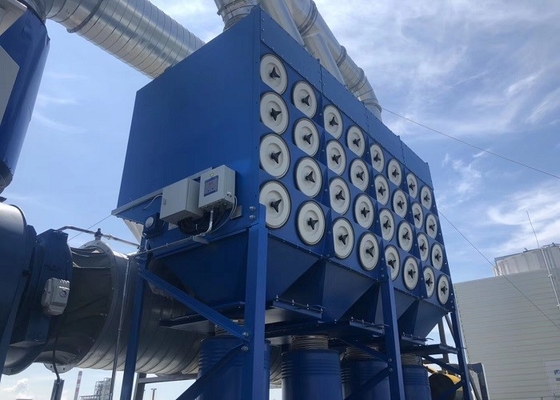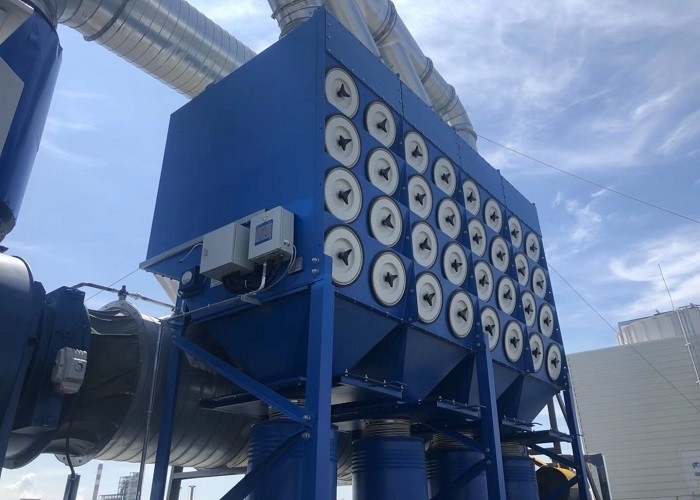
Explosion Proof Sawdust Removal System With Cartridge Dust Collector 3020X2150X3520
-
High Light
room dust collector
,industrial dust control systems
-
NamePleated Cartridge Air Filter
-
MaterialCarbon Steel
-
Efficiency99%
-
Filtration Area672㎡
-
Air Flow21000CMH
-
Media100% Polyester
-
ApplicationPower Plant,Lithium Battery Plant
-
Place of OriginCHINA
-
Brand NameAUZOER
-
CertificationISO
-
Model NumberCDC-32-4
-
Minimum Order Quantity1 unit
-
PriceNegotiable
-
Packaging DetailsWooden cases
-
Delivery Time30-60days
-
Payment TermsT/T(Negotiable)
-
Supply Ability300 units per year
Explosion Proof Sawdust Removal System With Cartridge Dust Collector 3020X2150X3520
Explosion Proof Sawdust Removal System With Cartridge Dust Collector 3020X2150X3520
CDC Downward Flow Cartridge Dust Collectors
| Model | Dimension(mm) | Modular (pcs) | Filter Area(㎡) | Pulse Valves | Filter Cartridge QTY(pcs) | G.W.(KG) | ||||
| Length | Width | Height | Polyester | Paper | Size | QTY(pcs) | ||||
| CDC1-1 | 1670 | 635 | 1366 | 1 | 9.4 | 23 | 3/4" | 1 | 1 | 473 |
| CDC2-2 | 1670 | 635 | 1860 | 1 | 18.8 | 46 | 2 | 2 | 633 | |
| CDC3-3 | 1670 | 635 | 2315 | 1 | 28.2 | 69 | 3 | 3 | 748 | |
| CDC8-2 | 1014 | 2150 | 2520 | 1 | 75 | 168 | 1" | 4 | 8 | 925 |
| CDC12-3 | 1014 | 2150 | 3520 | 1 | 112 | 252 | 6 | 12 | 1216 | |
| CDC16-4 | 1014 | 2150 | 3970 | 1 | 150 | 336 | 8 | 16 | 1280 | |
| CDC18-3 | 1514 | 2150 | 3520 | 1 | 170 | 378 | 9 | 16 | 1510 | |
| CDC24-3 | 2018 | 2150 | 3520 | 2 | 225 | 504 | 12 | 24 | 1865 | |
| CDC32-4 | 2018 | 2150 | 3970 | 2 | 300 | 672 | 16 | 32 | 2235 | |
| CDC36-3 | 3020 | 2150 | 3520 | 3 | 338 | 756 | 18 | 36 | 2615 | |
| CDC48-4 | 3020 | 2150 | 3970 | 3 | 451 | 1008 | 24 | 48 | 3185 | |
| CDC48-3 | 4023 | 2150 | 3520 | 4 | 451 | 1008 | 24 | 48 | 3450 | |
| CDC64-4 | 4023 | 2150 | 3970 | 4 | 601 | 1344 | 32 | 64 | 4070 | |
| CDC60-3 | 5026 | 2150 | 3520 | 5 | 564 | 1260 | 30 | 60 | 4430 | |
| CDC72-3 | 6030 | 2150 | 3520 | 6 | 676 | 1512 | 36 | 72 | 4830 | |
| CDC80-4 | 5026 | 2150 | 3970 | 5 | 752 | 1680 | 40 | 80 | 5085 | |
| CDC96-4 | 6030 | 2150 | 3970 | 6 | 902 | 2016 | 48 | 96 | 6070 | |
| CDC112-4 | 7040 | 2150 | 3970 | 7 | 1052 | 2352 | 56 | 112 | 7040 | |
| CDC128-4 | 8050 | 2150 | 3970 | 8 | 1203 | 2688 | 64 | 128 | 8000 | |
![]()
Tips
Use the Right Parts
Make sure your dust collector system is using the right parts, from the blower, dust filter, a filter-cleaning system, dust receptacle or dust removal system, to cartridges and baghouse solenoids, fans and valves. Each part plays a role to ensure the collector is operating at design point. We recommend using factory recommended replacement parts and be leery of less expensive alternatives.
Is Your Hopper Free of Dust?
A duct collector’s hopper should never be used to store dust. The hopper is intended to funnel process dust to a storage bin. Dust accumulating in a hopper creates a potential fire or deflagration risk. Dust in your hopper will also clog the system and diminish the collector’s performance and prevent the pulse-cleaning from doing its job.
Check Diaphragm Valves
It’s smart to make checking your diaphragm valves a priority each year. Particularly when new baghouses or cartridges are installed, it is recommended to check the valves and ensure that all filters are cleaned properly from the beginning. Remember that it’s always cheaper to replace diaphragm valves that it is to buy new filters because of inadequate pulsing. (Remember to wear appropriate ear protection when testing pulse valves as the noise level can rise considerably.)
Regularly Check Your Ductwork
The National Fire Protection Association requires protection for the ductwork and safety processes upstream of the dust collector. It’s smart to equip your ducting with a flow-activated isolation valve protecting downstream work areas from the propagation of flame and pressure through the inlet duct when deflagration occurs in a dust collector. If there is deflagration in a dust collector, the pressure will close the valve preventing the passage of flame and smoke to areas upstream from the valve. The valve latches shut and must be reopened manually. Some parts of the valve may be damaged, and a thorough inspection is required before the valve is back in service.
